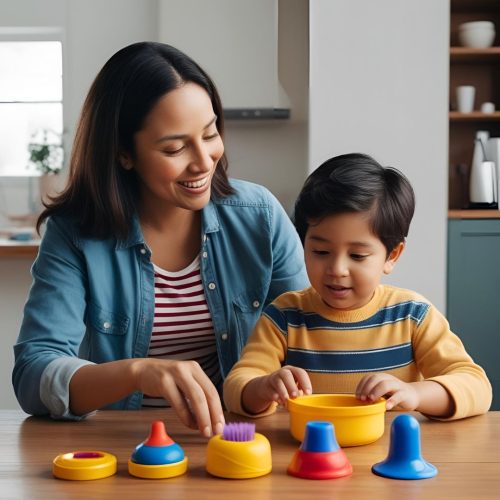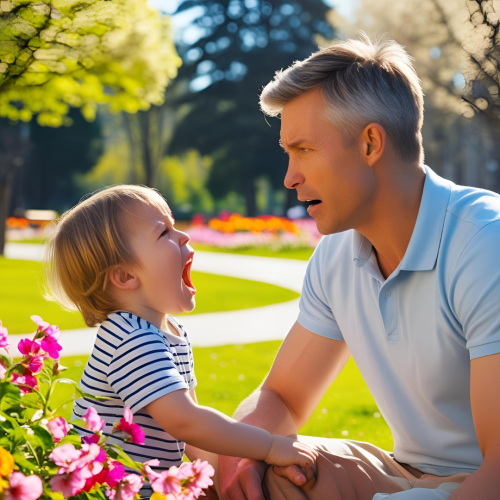- 01753 373 244 | 0800 999 1342 (Mon-Fri 9am-5pm)
- gems.4health@nhs.net
As parents or carers of autistic and ADHD children, you may have noticed that your child communicates in wonderfully unique ways-perhaps repeating favourite phrases from films, singing entire songs, or using chunks of language that seem to come from nowhere or are used out of context. This isn’t something to worry about; it’s actually a brilliant example of how your child’s brain naturally learns language through a process called Gestalt Language Processing (GLP).
Rather than viewing these communication patterns as negative or not normal, try to celebrate the remarkable way your child’s mind works. Gestalt language processing represents a different, equally valid pathway to communication, one that highlights your child’s strengths and natural learning abilities.


Gestalt Language Processing is a natural way of learning language where children acquire communication skills in “chunks” or complete units, rather than building up from individual words. Think of it as learning language from “whole to part” rather than “part to whole”. Your child’s brain is brilliantly designed to recognise and use entire phrases, sentences, or even paragraphs as single meaningful units.
This includes what we call echolalia-the repetition of words, phrases, or sentences that your child has heard before. Far from being meaningless repetition, research has shown that echolalia serves crucial communicative purposes and represents an important stepping stone in your child’s language development. Sometimes echolalia is immediate, a child copying words or sounds as soon as they’ve heard them. Other times it is delayed. Not all echolalia is to communicate, sometimes it is a child stimming and trying to regulate.
Echolalia
Echolalia is not always random or purposeless-it’s your child’s clever way of communicating when speech feels challenging. Modern research reveals that echolalia serves several functions or benefits.
Building language skills: Each time your child repeats a phrase, they’re practising sentence structure, grammar, and intonation patterns, gradually expanding their language repertoire. It’s like having a personal language laboratory where they can safely explore how words fit together.
Promoting social connection: Echolalia helps your child engage in turn-taking and the give-and-take nature of conversation, fostering social connection with others. When your child echoes familiar phrases, they’re actively participating in social interaction in their own meaningful way.
Expressing emotions and needs: Your child may use familiar phrases to communicate their emotional state or desires, serving as both a communication tool and a coping mechanism during overwhelming moments. This repetition can provide comfort and stability whilst helping them regulate their emotions effectively. It can even remind them of similar times of distress and that everything was ok then and will be now.
Supporting understanding: The act of echoing actually helps your child process and understand information more effectively, reinforcing auditory processing and memory skills whilst building a stronger cognitive framework.
Your child’s gestalt language journey will likely follow predictable, natural stages that eventually lead to flexible, self-generated communication. Understanding these stages can help you see the remarkable progress your child is making:
Stage 1: Whole gestalts: Your child uses complete phrases, sentences, or even longer scripts from their environment. Perhaps entire scenes from favourite books or films. These chunks carry meaning for your child, even if that meaning isn’t immediately apparent to others.
Stage 2: Mix and match: Your child begins breaking down larger gestalts into smaller chunks and creatively combining parts from different scripts. This demonstrates incredible cognitive flexibility as they start to recognise patterns within language.
Stage 3: Single words and new combinations: Your child isolates individual words from their gestalts and begins creating original two-word combinations. This marks an exciting milestone in their language learning.
Stage 4: Grammar development: Your child starts using proper grammar structures, both correctly and incorrectly, as they experiment with language rules. These “mistakes” are actually signs of active language learning and growth.
Stages 5 & 6: Advanced language: Your child develops increasingly sophisticated grammatical structures and flexible language use. Many children reach these advanced stages with appropriate support and understanding.
Research suggests that gestalt processing may actually be areas of significant strength for many autistic children, providing a unique window into their mind when properly understood and supported. Your child’s ability to process and remember complex language patterns demonstrates remarkable auditory memory and pattern recognition skills.
Many gestalt language processors develop rich, expressive language with varied intonation patterns. They often become skilled at using language creatively, drawing from their stored phrases to communicate in novel and meaningful ways.
Supporting communication at home
Understanding your child’s gestalt language processing style allows you to provide meaningful support that works with their natural learning style rather than against it:
Follow your child’s lead: Listen carefully to your child’s scripts and gestalts, recognising that they likely carry important meaning. Respond to the communicative intent behind their words, even if the context isn’t immediately obvious.
Provide rich language models: Offer your child plenty of language-rich experiences through books, songs, conversations, and everyday interactions. The more varied language input they receive, the more building blocks they have for future communication.
Celebrate progress at every stage: Acknowledge and celebrate your child’s communication attempts, regardless of which stage they’re in. Every gestalt, every mix-and-match attempt, every new word combination represents meaningful progress.
Use visual supports: Complement your child’s auditory strengths with visual aids that can help them understand and use language. Giving more building blocks and context for their gestalts.
Be patient with the process: Remember that language development through gestalt processing follows its own timeline. Trust in your child’s natural ability to progress through the stages at their own pace.
Working with speech and language professionals
When seeking professional support, look for speech-language therapist who understand and embrace gestalt language processing. These
professionals recognise that your child’s communication style isn’t something
to be “fixed” but rather supported and expanded upon.
The most effective therapy approaches work with your child’s natural learning style, helping them progress through the stages of gestalt
language development whilst celebrating their unique communicative strengths.
It is important for them to work with the family, to show you how to support your child at home.
Your child’s gestalt language processing represents a beautiful example of neurodivergence in action.
Research consistently shows that children who use gestalt language processing can and do develop flexible, meaningful communication skills. Many go on to become eloquent speakers who use language in rich, creative ways.
Your child’s brain is not broken or deficient, it’s simply wired differently, with its own strengths and capabilities. By understanding and supporting their gestalt language processing journey, you’re helping them develop into confident, capable communicators who can navigate the world using their own voice.
Remember, there is no single “right” way to develop language. Your child’s path may look different from others, but it’s no less valid or valuable. Embrace their journey, celebrate their progress, and trust in their potential to grow and thrive.